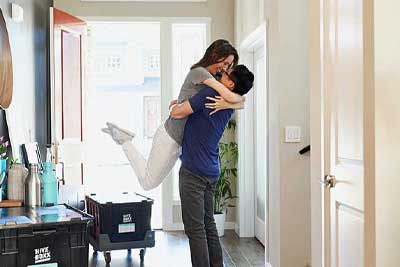
Your home is your sanctuary, but ensuring it remains a safe place requires proactive measures. One of the most critical aspects of home safety in Canada is installing and maintaining smoke and carbon monoxide (CO) alarms. These devices serve as early warning systems that save lives, giving you and your family time to react in an emergency.
Why Smoke & CO Alarms Are Essential in Canada
Canadian winters bring increased risks due to higher usage of heating systems, fireplaces, and fuel-burning appliances. Carbon monoxide poisoning is more common in colder months when homes are sealed tight, and house fires peak during winter due to heating equipment and electrical issues.
🔥 Smoke Alarms Save Lives
- House fires spread quickly, and working smoke alarms cut the risk of fire-related death in half.
- Fires often start at night when people are asleep—early detection can make all the difference.
- In Canada, the top causes of house fires include cooking, heating equipment, and electrical issues.
🛑 Carbon Monoxide (CO) – The Silent Killer
- Odourless, colourless, and tasteless, CO can be fatal before symptoms appear.
- It is produced by gas furnaces, fireplaces, water heaters, and vehicles left idling in attached garages.
- Even low exposure can cause nausea, dizziness, and confusion, while high levels can be deadly in minutes.
What Canadian Fire Safety Codes Say
In Canada, fire codes vary by province and municipality, but most require:
✅ Smoke alarms on every level of the home and outside sleeping areas.
✅ CO alarms near all sleeping areas if the home has a fuel-burning appliance or attached garage.
✅ Hardwired or battery-powered alarms that meet CSA (Canadian Standards Association) approval.
Where to Install Smoke & CO Alarms in Your Home
✅ Smoke Alarms
- Inside every bedroom – Fires often start while people are sleeping.
- Outside sleeping areas – Hallways near bedrooms need coverage.
- On every floor of your home – Including the basement and attached garage.
- Near the kitchen – At least 10 feet away from cooking appliances to avoid false alarms.
✅ CO Alarms
- On every level of your home – CO can spread through air circulation.
- Near all sleeping areas – Ensure protection while your family sleeps.
- Close to fuel-burning appliances – Such as gas furnaces, water heaters, fireplaces, and garages.
Tip: Avoid installing alarms near vents, windows, or ceiling fans, as airflow can affect their ability to detect smoke or CO properly.
Maintaining Your Smoke & CO Alarms in Canada
🔄 Test Monthly
- Press the test button to make sure the alarm sounds.
- If the alarm is weak or unresponsive, replace the batteries or unit.
🔋 Change Batteries Annually
- Many alarms chirp when batteries are low, but it’s best to change them every year.
- 10-year sealed battery alarms are a great option for hassle-free maintenance.
🛠️ Clean Your Alarms
- Dust and debris can block sensors, reducing effectiveness.
- Use a soft vacuum attachment or dry cloth every few months to remove dust buildup.
⏳ Know When to Replace Alarms
- Smoke alarms: Replace every 10 years.
- CO alarms: Replace every 5–7 years.
- Check the manufacturing date on the alarm’s back to know when it was made.
Tips and Tricks
Canadian Winter Safety Tip: CO Alarm Placement Near Furnaces & Garages
With cold Canadian winters, many homeowners warm up their cars inside attached garages—this is extremely dangerous. Even with the garage door open, CO can seep into your home.
- Never warm up a vehicle in a closed garage.
- Place a CO alarm near the door between your home and garage for extra safety.
- Ensure your furnace is serviced annually to prevent CO leaks.
Interconnected Alarms for Maximum Safety
Consider installing interconnected smoke and CO alarms—when one alarm goes off, all alarms in the home sound. This ensures whole-home coverage, especially in larger houses.
Create & Practice a Fire Escape Plan
- Having alarms is only the first step. Every family needs a fire escape plan:
- Identify two exits per room.
- Practice fire drills twice a year.
- Establish a safe meeting spot outside.
- Teach kids to recognize alarm sounds and how to escape safely.






